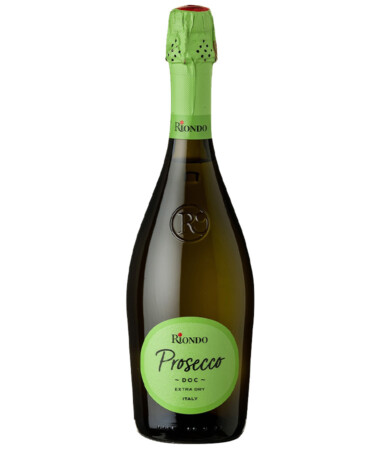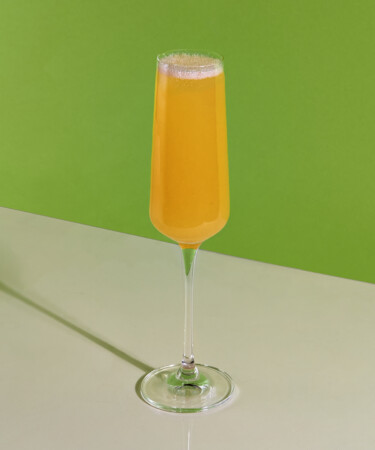Table Of Contents
Prosecco 101
Last Updated: April 21, 2024
Prosecco is an easy-drinking Italian sparkling wine that is meant to be enjoyed young and fresh. It's versatile enough to drink as an aperitif, as part of a celebration, paired with a meal, or used as an ingredient in a cocktail. Prosecco is often compared with Champagne, but the Italian bubbly offers a multitude of unique differences, not to mention everyday affordability.
Perhaps the most urgent question, however, might be “is Prosecco sweet?” Not always. It comes in various sweetness levels, and can even be dry (depending on your tastes, it can even be dry enough for a Prosecco mimosa). Read VinePair’s full Prosecco guide for everything you need to know about Italy’s most famous bubbly.
Looking for a bottle to buy? See our guide to the best Prosecco, as well our favorite Prosecco under $20.
Prosecco In 60 Seconds:
· Prosecco is made predominantly from the white Glera grape.
· There are two main styles of Prosecco: Frizzante (fizzy) and Spumante (fully sparkling).
· Prosecco uses the charmat method (or tank method) to gain its bubbles.
· Prosecco is made exclusively in the Veneto and Friuli regions of northeast Italy.
What Is Prosecco?
Prosecco is a sparkling wine made exclusively from the white Glera grape in the Veneto and Friuli regions of northern Italy. An easy-drinking bubbly, Prosecco is notable for its refreshing fruity and floral notes.
There are a few different quality levels (or classifications) of Prosecco. Bottles typically arrive in one of two bubbly styles: Frizzante (fizzy) or Spumante (fully sparkling). While still Prosecco does exist (Tranquillo) it’s very uncommon. Prosecco is also bottled at four different levels of sweetness: Brut (driest), Extra Dry, Dry, and Demi-Sec (sweetest).
Prosecco vs Champagne
Sometimes compared to one another, in reality, Prosecco and Champagne are vastly different. In addition to being made from different grapes, the most notable difference comes from how each wine gains its bubbles.
Prosecco is made using the Charmat method, meaning that the second fermentation (which is necessary for fizz) takes place in a stainless steel tank. This process produces a younger and fruitier style of sparkling wine. Champagne uses the Méthode Champenoise for its second fermentation. This happens inside the bottle, on the lees, resulting in a more complex and often less fruit-forward profile.
What Prosecco Tastes Like
While often thought of as sweeter than Champagne, most Prosecco is dry or off-dry with medium to high acidity and loads of fruit character. Lemon and other citrus notes are prevalent along with green fruit flavors such as apple, pear, or quince. Prosecco can have varying levels of sweetness starting with Brut Prosecco, which is dry and has less than 12 grams of residual sugar per liter. Extra Dry has 12 to 17 grams of residual sugar per liter; Dry Prosecco contains 17 to 32 grams per liter; and Demi-Sec, the sweetest style, has 32 to 50 grams of residual sugar per liter.
While the majority of Prosecco producers use 100 percent Glera, DOC and DOCG rules allow the wine to contain up to 15 percent Chardonnay, Pinot Bianco, Pinot Grigio, or even Pinot Noir (as long as it’s vinified as a white wine). Including these varieties in the blend can add structure and complexity, which is a bonus if the Glera grape had a difficult growing season.
Charmat Method
One of the biggest differences between Prosecco and Champagne is how it’s made. All sparkling wines go through a secondary fermentation, which creates Carbon Dioxide (CO2) bubbles. Secondary fermentation takes place inside the bottle for wines made using the traditional method. By contrast, Prosecco undergoes secondary fermentation in a tank before the wine is filtered and bottled.
The Charmat method, as it’s known, highlights the fresh characteristics of the Glera grape, resulting in a light and fruity sparkling wine. Prosecco is cheaper to produce than bottles made using the traditional method, and therefore more affordable to buy.
Styles of Prosecco
The two leading styles of Prosecco are defined by their carbonation levels. Spumante is the most common version of Prosecco and has over 3 bars of atmospheric pressure. A lighter version, called Frizzante, has less persistent bubbles with pressure between 1 and 2.5 bars. To put that into context, traditional method sparkling wines usually have an atmospheric pressure of 5 or 6 bars.
Prosecco without bubbles, a still wine known as Tranquillo, is made but is not commonly seen outside of northern Italy.
Prosecco’s Climate and Wine Growing Areas
Prosecco comes from a large growing area that covers nine different provinces spanning the Veneto and Friuli regions in northeast Italy. The climate is warm and temperate but the areas that grow Glera — especially higher-quality versions — are typically located on hillsides where it’s cooler and rains a lot.
Prosecco DOC is the basic quality level for the region’s wines, and is also the most widely-available. Producers in the provinces of Treviso and Trieste can label their wines DOC Treviso or DOC Trieste, provided the entirety of the production takes place within one of those two communes.
The higher-quality Prosecco Superiore DOCGs, of which there are two, are located in the Treviso province of Veneto. The Conegliano Valdobbiadene Superiore DOCG and Asolo DOCG zones produce the most elegant expressions of Prosecco. Located on steep hills, which are recognized as a UNESCO World Heritage Site, everything from pruning to picking is done by hand.
How to Pair Prosecco with Food
Prosecco is a great fit for any occasion because it pairs so well with food. A popular brunch option, pair it with fruit salad or prosciutto-wrapped melon. The sweet-and-salty theme can be mirrored as an appetizer using cured meats and dried fruit on a charcuterie platter. As for dinner, seek out international cuisines: The spritzy bubbles and fruity character of the wine will shine alongside a spicy pad thai or sushi.
Read Our Full Prosecco Coverage Below





















![Holiday Traditions Get a Sparkly Makeover Thanks to Diamond Collection Prosecco [Infographic]](https://vinepair.com/wp-content/uploads/2023/12/coppola-prosecco-infographic-card-375x450.jpg)

![The States That Love Prosecco the Most [Map]](https://vinepair.com/wp-content/uploads/2020/08/proseccomap_card-375x450.jpg)
![Salute Spring with Eight Great Seasonal Wine Pairings [INFOGRAPHIC]](https://vinepair.com/wp-content/uploads/2019/03/cavit_infographic_card_new-375x450.png)



















































![How to Upgrade Your Popcorn Nights With Bubbly [INFOGRAPHIC]](https://vinepair.com/wp-content/uploads/2019/12/bubblyweek_2019_infographic_v4_card-375x450.png)
